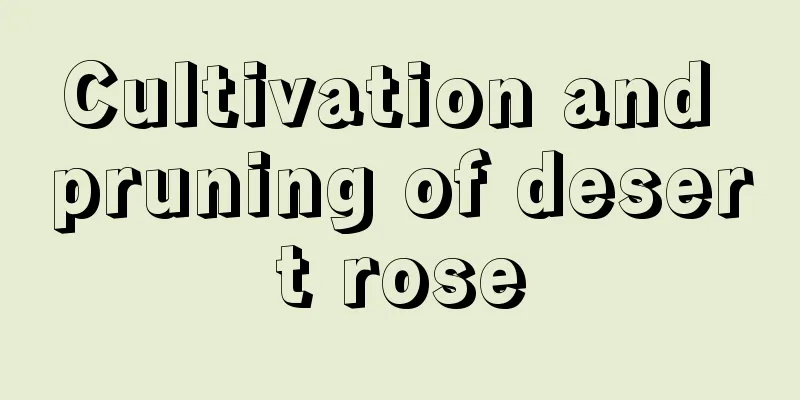When is the best time to plant ginger? When to harvest?

|
Ginger is indispensable in people's daily life. It can be eaten alone as a vegetable , and it is also an extremely important condiment . Many families also grow ginger. So when is the best time to plant ginger? When to harvest? Let’s take a look below. 1. When is the best time to plant ginger? When to harvest? Ginger is a crop that likes warmth and is afraid of cold. It cannot be planted too early. If planted too early, it will not only fail to germinate but will also easily rot. The most suitable temperature for planting ginger in spring should not be lower than 15 degrees. It is generally planted in March and April in the south and in April and May in the north. But it cannot be planted too late, because the growing period of ginger is very long, which takes about 5 months. If the planting time is too late, the ginger will be exposed to frost before the harvest time, which will cause frostbite on the branches and leaves and reduce the yield. 2. Ginger planting methods and management 1. Site selection The first step in growing ginger is choosing the right location for planting. Ginger prefers a warm, humid, cool and fertile environment, so these factors should be considered when choosing a site. It is best to plant it in a place that is sheltered from the wind, sunny, well-drained, with loose and fertile soil and sufficient water. At the same time, continuous cropping should be avoided to prevent residual pests and diseases in the soil from affecting the growth of ginger. 2. Seed preparation Seed preparation is an important step in growing ginger. First of all, you need to choose healthy ginger seeds that are free of pests and diseases and of high quality. Then, air the ginger seeds for 1-2 days to increase their germination rate. Next, soak the ginger seeds in 500 times diluted 50% carbendazim wettable powder for 20 minutes for disinfection. Finally, place the ginger seeds at a temperature of 25-30℃ to germinate, and you can sow them when the ginger sprouts grow to 1-2 cm. 3. Germination Germination is a key step in growing ginger. During the germination process, maintain appropriate temperature and humidity. Ginger seeds can be placed in a greenhouse or plastic greenhouse and covered with wet cloth or straw to maintain humidity. At the same time, pay attention to ventilation to avoid high temperatures that may cause the ginger seeds to rot. 4. Planting seeds Sowing is an important step in growing ginger. Before sowing, the soil should be deeply plowed and sufficient base fertilizer should be applied. Then, sow the ginger seeds according to the specifications of 30-40 cm row spacing and 20-30 cm plant spacing. The sowing depth should be 5-7 cm, and the soil covering thickness should be 3-4 cm. Water in time after sowing to keep the soil moist. 5. Field management Field management is an important part of ginger cultivation. During the growth process of ginger, it is necessary to weed, loosen the soil, cultivate the soil and water it in time. At the same time, pay attention to fertilization to meet the growth needs of ginger. In the early growth stage, nitrogen fertilizer can be applied to promote stem and leaf growth; in the middle and late growth stages, phosphorus and potassium fertilizers should be added to increase ginger yield and quality. In addition, pay attention to adjusting light and temperature to maintain a suitable growth environment. 6. Pest and disease control Pest and disease control is an important task in the process of growing ginger. Ginger is susceptible to a variety of diseases and pests, such as ginger blight and ginger borer. Therefore, it is necessary to strengthen disease and pest control during the planting process. A combination of agricultural control, biological control and chemical control can be adopted to effectively control the occurrence and spread of pests and diseases. At the same time, pay attention to choosing low-toxic and low-residue pesticides to reduce harm to the environment and human body. That’s it |
<<: How to grow round-leaf peperomia
>>: How to care for ginger lotus in winter
Recommend
Why Amaryllis does not bloom?
1. Timely pruning 1. Reason: When Amaryllis is to...
How to grow carnations
1. Breeding environment 1. Soil. Carnations prefe...
The process of plant germination
The process of plant germination Plant germinatio...
Can locust trees be planted in the yard?
Can I plant acacia trees in my yard? Sophora japo...
Can the lucky flower be grown at home? How to care for it at home
1. Can it be kept at home? The lucky bamboo is a ...
How to water the fortune tree in winter
1. What kind of water should be poured It is best...
Are snapdragon and goldfish spider plant the same plant?
Are snapdragon and goldfish spider plant the same...
How to propagate raspberries
Difficulty of propagating raspberries Raspberry, ...
Price and picture of bougainvillea bonsai
1. Price Although bougainvillea is a common ornam...
Phalaenopsis growth environment conditions and characteristics
Phalaenopsis growth environment conditions and re...
Cultivation methods and precautions of red peony
How to grow red peony Light temperature The red p...
Water requirements of cloves
1. Watering cycle Lilac is not a particularly wat...
Common diseases and pests of Tillandsia and their control
Disease type Root rot The roots of the plant will...
How to Plant Lemon Mint Seeds
Lemon Mint Seeds Introduction Generally, the seed...
How to propagate poplars and what to pay attention to
Poplar propagation method Poplars can be propagat...









